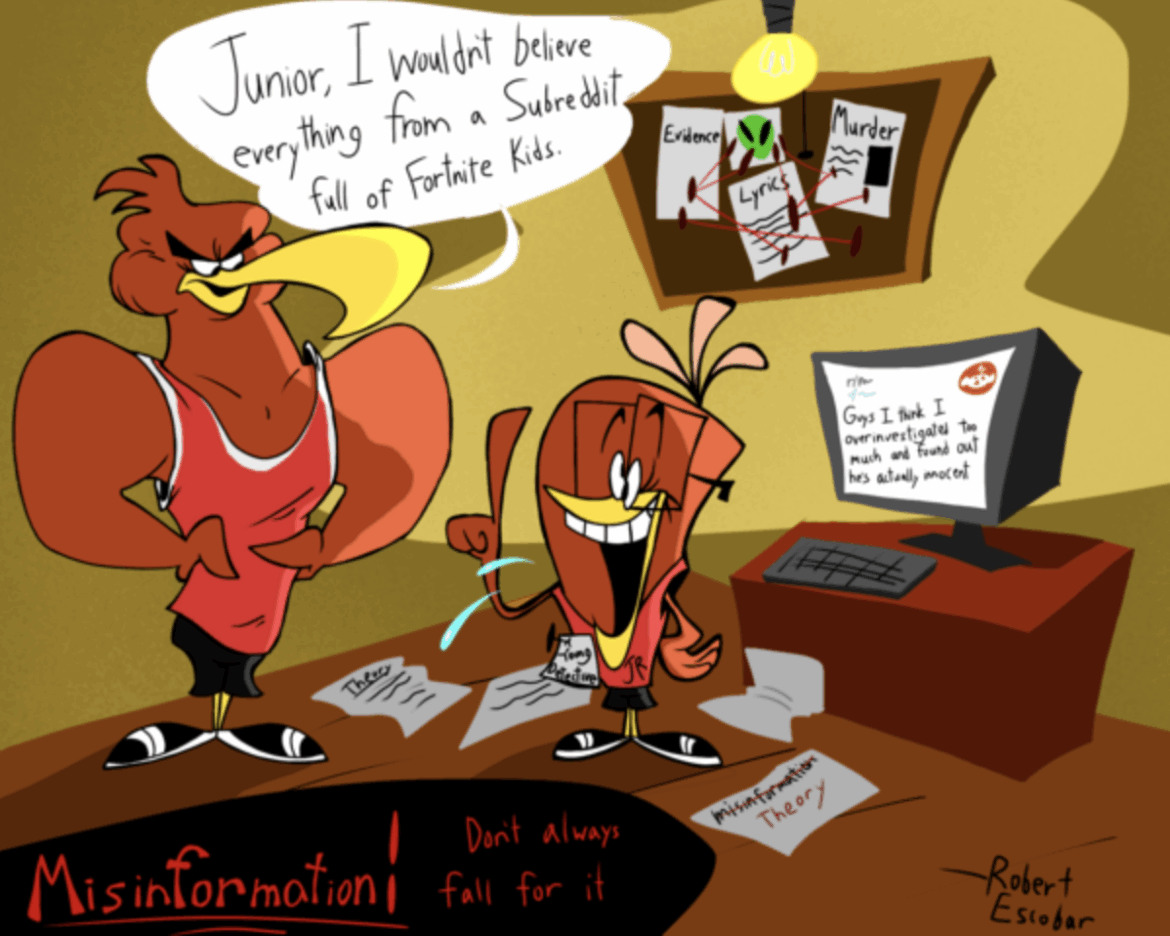“Romantic Homicide” was never meant to be a confession, but social media thinks they have solved the case. Rumors involving lyrics, tattoos and photos spread faster than reality. Yet, where is the line between theory and fact?
This is not what we meant when we said we liked “Romantic Homicide.” A track written in 2022 by the rising star, d4vd, meant to capture the sting of heartbreak, now echoes with the haunting weight of a possible confession. Once human remains were discovered in a Tesla registered under his name, fans were in an uproar, turning his art into evidence. Social media has not missed a lyric or tattoo, as users dissect every detail for possible clues.
Despite the investigation still being ongoing, one thing remains clear — fans have already reached a verdict. Online conversations claim that d4vd had a romantic relationship with the victim, Celeste Rivas Hernandez. Internet sleuths point to photos, Discord conversations and even rumors of hush-money payments as proof. But as screenshots circulate, none have been confirmed by investigators and their legitimacy remains unknown. This is where fiction collides with reality, and the line between fact and theory begins to blur.
It is safe to say that a scandal like this will leave a lasting mark on d4vd’s career. As fans inspect his catalog, discovering matching tattoos and an unreleased song to be titled after Celeste, the question is no longer just about the artist. Instead, it is about how quickly music can become a suspect in the court of public opinion.
The bigger issue is how much of what is spread is the truth and how much is theory?
David Anthony Burke, better known as d4vd, is a singer-songwriter whose genre blends alternative, indie, pop and emo. Rising to fame after his breakout track “Romantic Homicide” went viral in 2022, he built a reputation for writing dark, emotionally raw music. The song itself is meant to portray heartbreak and the anger of losing someone deeply important. Yet in light of recent events, lyrics like “I killed you and I didn’t even regret it,” are being replayed not as metaphor, but as evidence. The question stands: can an artist truly be put on trial for the way his music is interpreted?
Every day new theories pop up online, but feelings alone cannot solve a case. Even if the anger is understandable, there is a danger in using lyrics as evidence. After all, countless artists write about extreme emotions without them being taken literally. For example, SZA’s “Kill Bill” fantasizes about killing an ex and his new girlfriend, but no one assumes that to be a confession. If lyrics themselves are to be treated as fact, then d4vd would not be the only artist to end up in the courtroom.
The decision of whether to use an artist’s work as evidence in an investigation is heavily debated in a courtroom. It is also something that we as observers have no say in, even if it is with good intentions.
When it comes to tragic mysteries, you can most certainly count on social media users acting as investigators. However, there are both advantages and disadvantages of social media involvement in unfolding cases. On one hand, it spreads awareness for those who may not enjoy watching the news or have time to watch it. However, there is also a cost. On social media, news content often gets wrongly interpreted. It can create false information and rumors, drowning out facts and obfuscating the authorities’ investigation.
People on social media have spread unverified claims about Celeste’s personal life, including rumors of pregnancy and even conspiracy theories suggesting that there were two different Celestes involved. None of these claims has been confirmed nor denied by official authorities or credible outlets. Yet they spread like wildfire, quickly muddling the facts. This kind of misinformation and speculation shows how quickly perception can overtake truth and how easily tragedy can twist in the hands of rumor culture.
Celeste Rivas Hernandez was only fifteen when her remains were found in September of 2025. Missing since April of 2024, she was described by friends and family as bright and deeply loved. Whatever the circumstances, she was a child and her family deserves compassion and space to grieve. I fear we are too focused on theoretical ideas than we are on the fact that a young girl has died. As much as the urge to seek justice is understandable, we must keep in mind that we are not true investigators and no amount of speculation can bring her back.
The case’s ongoing investigation shows how fragile the line between art and reality becomes in the era of social media. Platforms can quickly twist lyrics into evidence and rumors into verdicts, way before any facts are truly known. Before playing detective, we should ask ourselves if we are uncovering the truth or rewriting the situation entirely. As much as art deserves interpretation, people also deserve justice and truth. While we may want to partake in providing justice and truth, in the end the best thing we can do from the outside is offer support and empathy to those who lost a loved one.



